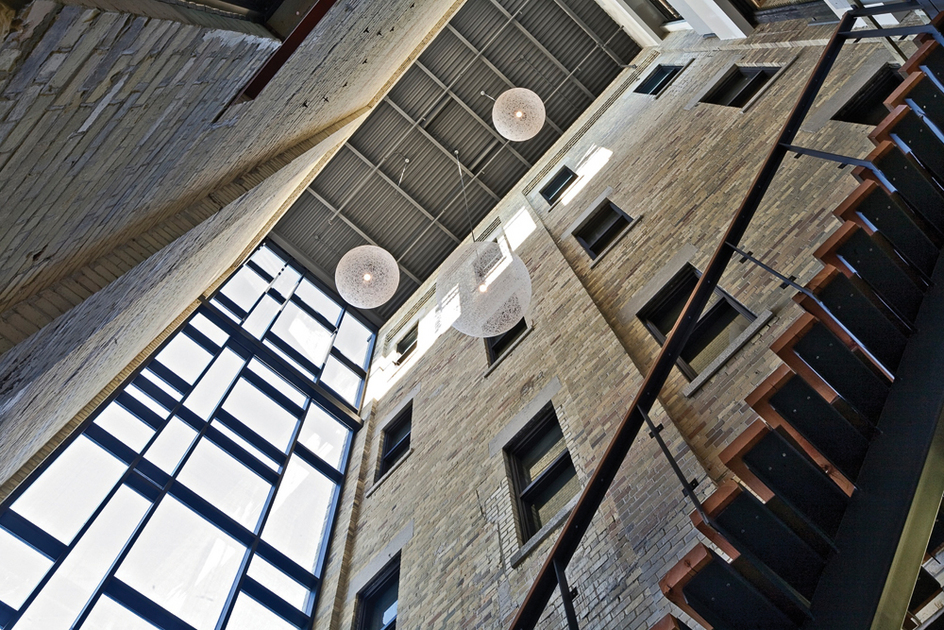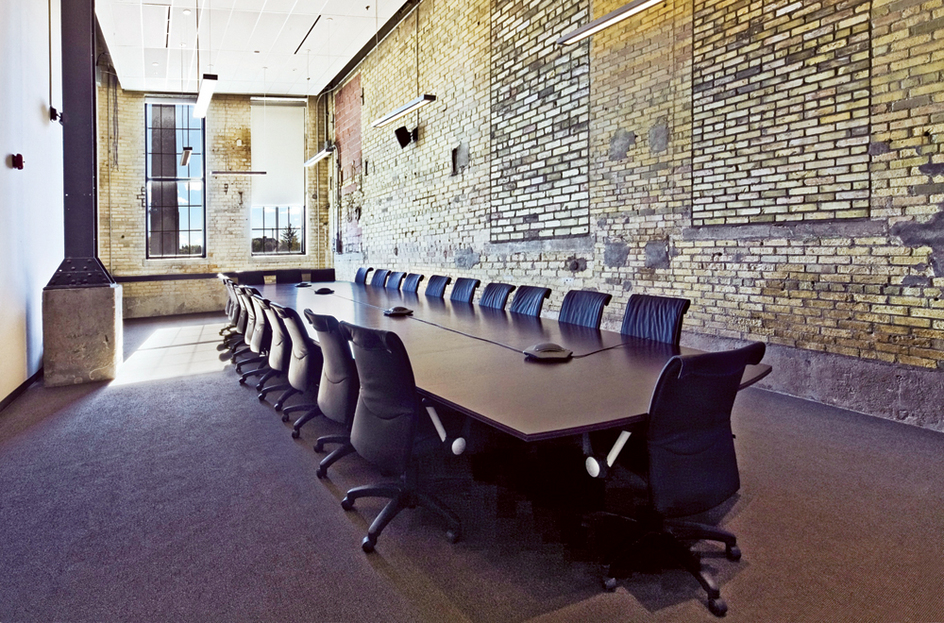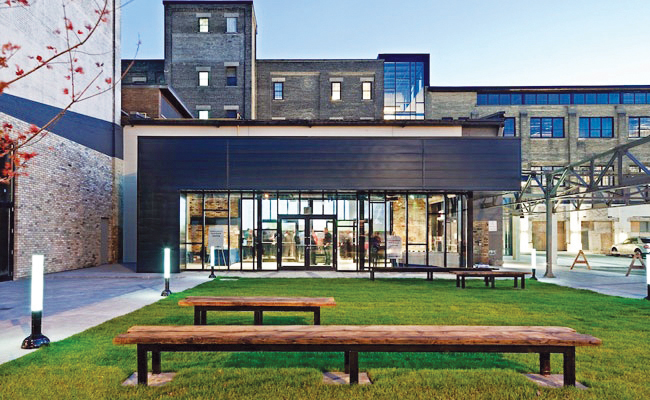

For News Tips & Advertising call...
Kitchener East - 519-578-8228
Kitchener West - 519-394-0335

Redevelopment of Kitchener’s Tannery District wins best overall project
By Carrie Debrone
Kitchener Citizen
Sometimes when you kiss a frog, you end up with a prince.
Just five years ago, old factory buildings that took up two city blocks bounded by Victoria, Charles, Francis and Joseph streets near Kitchener’s core were sitting empty.
Situated on contaminated soil, it seemed doubtful that anyone would want the Lang Tannery site.
Today, “The Tannery District” as it is known, is considered one of the key developments in downtown Kitchener. It is one of the largest redevelopment projects of its kind in Canada, and is a model example of how post-industrial mid-sized cities can bring back vibrancy to their downtown cores.
Completed in 2010, Kitchener Mayor Carl Zehr describes the project as “an overwhelming success”.
“It caught people’s imagination,” he said, adding, “it bodes well for other old industrial buildings in Kitchener” - buildings like the Breithaupt Block, owned by the Perimeter Group, and the Arrow Lofts, currently under construction and slated for occupancy in early 2012.
“It shows it can be done and that there’s a market for this. It created jobs and gives a visible face to the technology sector presence in Kitchener. It made people sit up and take notice.”
On October 4 The Tannery District took top honours when it was awarded best overall project in Canada for 2011, winning the national award at the Canadian Brownfields Network “Brownie Awards” in Toronto. The Canadian Urban Institute’s annual Brownie Awards program recognizes leadership, innovation and environmental sustainability in brownfields redevelopment across Canada.
“It is more than we could have hoped for. In many ways, it’s a very humbling experience,” said Lana Sherman of the Tannery’s developing company Cadan Inc.
“We are profoundly grateful for the support and encouragement we’ve received from the amazing people working at the City of Kitchener. We would never have been able to achieve this without that support.”
The unique $56-million project revitalized 350,000 sq. ft of a building that once was the largest tannery in the British Empire, supplying the leather for soldier’s boot soles and saddles during the First World War, and leather linings for aircraft fuel tanks during the Second World War. The redevelopment turned the site into an environmentally friendly, community space that has become a hub of high tech businesses while celebrating Kitchener’s heritage and stimulating investment and renovation in surrounding sites.
Each day it welcomes more than 1,000 people to work.
Notable tenants include Communitech, Google and Desire2Learn. With new business growth, all three companies have requested additional office space within The Tannery, and renovations are now being completed.
Digital Media Convergence Centre (Communitech) will be getting an additional 12,000 sq. ft., Google 9,000 sq. ft., and Desire2Learn 20,000 sq. ft.
Kitchener Citizen
Sometimes when you kiss a frog, you end up with a prince.
Just five years ago, old factory buildings that took up two city blocks bounded by Victoria, Charles, Francis and Joseph streets near Kitchener’s core were sitting empty.
Situated on contaminated soil, it seemed doubtful that anyone would want the Lang Tannery site.
Today, “The Tannery District” as it is known, is considered one of the key developments in downtown Kitchener. It is one of the largest redevelopment projects of its kind in Canada, and is a model example of how post-industrial mid-sized cities can bring back vibrancy to their downtown cores.
Completed in 2010, Kitchener Mayor Carl Zehr describes the project as “an overwhelming success”.
“It caught people’s imagination,” he said, adding, “it bodes well for other old industrial buildings in Kitchener” - buildings like the Breithaupt Block, owned by the Perimeter Group, and the Arrow Lofts, currently under construction and slated for occupancy in early 2012.
“It shows it can be done and that there’s a market for this. It created jobs and gives a visible face to the technology sector presence in Kitchener. It made people sit up and take notice.”
On October 4 The Tannery District took top honours when it was awarded best overall project in Canada for 2011, winning the national award at the Canadian Brownfields Network “Brownie Awards” in Toronto. The Canadian Urban Institute’s annual Brownie Awards program recognizes leadership, innovation and environmental sustainability in brownfields redevelopment across Canada.
“It is more than we could have hoped for. In many ways, it’s a very humbling experience,” said Lana Sherman of the Tannery’s developing company Cadan Inc.
“We are profoundly grateful for the support and encouragement we’ve received from the amazing people working at the City of Kitchener. We would never have been able to achieve this without that support.”
The unique $56-million project revitalized 350,000 sq. ft of a building that once was the largest tannery in the British Empire, supplying the leather for soldier’s boot soles and saddles during the First World War, and leather linings for aircraft fuel tanks during the Second World War. The redevelopment turned the site into an environmentally friendly, community space that has become a hub of high tech businesses while celebrating Kitchener’s heritage and stimulating investment and renovation in surrounding sites.
Each day it welcomes more than 1,000 people to work.
Notable tenants include Communitech, Google and Desire2Learn. With new business growth, all three companies have requested additional office space within The Tannery, and renovations are now being completed.
Digital Media Convergence Centre (Communitech) will be getting an additional 12,000 sq. ft., Google 9,000 sq. ft., and Desire2Learn 20,000 sq. ft.
On October 5, the project also received the Kitchener Urban Design/Mike Wagner Heritage Award in the Rehabilitation / Adaptive Reuse of a Cultural Heritage Resource category for its sensitive adaptation of a cultural heritage resource.
The original tannery, founded by Rheinhold Lang in 1848, was destroyed by fire. The buildings we see there today were constructed between 1896 and 1956, and were used most recently as a tire warehousing facility.
Owned by the Ball family, Zehr said the Tannery factory buildings had been on the market for several years with no takers. With the date fast approaching for closures of purchase bids, the City of Kitchener received a call from Toronto-based developers Cadan Inc. in 2007.
“They wanted to talk to us about how the city core was going to develop and the city’s vision for the future,” Zehr recollects.
The meeting went well -- so well that the company decided to purchase the buildings, attempt to save its character, and redevelop it as multi-purpose, open floor plan, brick-and-beam office space.
“I’ve heard the developer say since then that it was the kind of welcome that they got during that meeting that persuaded them to go ahead with the project,” Zehr said.
“It certainly fit very well with our vision for the city at the time,” he said. Just a few years earlier the city had committed itself to revitalizing the downtown core, giving a $30-million grant to the University of Waterloo for the 120,00 square-foot School of Pharmacy at King and Victoria Streets.
It also sat well with the environmental bent that permeated many of the city’s new policies.
“Reclaiming old buildings keeps old construction material out of the landfill. It’s good stewardship to reuse materials when possible and this project also cleaned up the soil contamination, which protects our ground water,” Zehr said.
In March of 2009, The Tannery project was granted $891,000 to pay for the environmental cleanup of the site. Contamination was worse than expected, and the cleanup took eight months. The money came from both the City of Kitchener and the Region of Waterloo as part of an incentive program to encourage the redevelopment of former industrial sites.
The payment was expected to be recovered within two years from the increased property taxes generated by the project.
“These old buildings provide cultural, heritage and social bonds and are part of the public heritage that everyone shares. This project brings the building back to life as a living emblem of the history of Kitchener,” said The Tannery District’s lead architect Roland Rom Colthoff of Raw Design, adding that The Tannery forms a clear link between Kitchener’s industrial heritage and its future growth in technologically-based business.
Approaching the redevelopment, Rom Colthoff said he wrestled with how to keep the character of the old building, making some hard decisions about which of the maze of buildings from the old collection on the site were really the most valuable and would stand out.
RAW Design preserved the masonry shell and divided the site into three main buildings: two for tech offices and one housing workspace and retail for the artisans.
“We also wanted a contrast between the new and the old,” Rom Colthoff said, explaining that they avoided the use of brick in the new construction, preferring instead to use metal and glass.
He noted that the redesign included the construction of a core elevator, which provided simple access to all parts of the building, eliminating the long corridors that connected the original buildings.
Interior spaces were kept shallow and courtyards were cut into the site to maximize daylight. Preserving the industrial feel of the old buildings, the architect also had the steel structure painted, sandblasted the existing brickwork, and the wood floors on the upper levels were refinished.
There are plans for a second phase of The Tannery. Phase two would front on Victoria and Joseph Streets in an area that is currently a parking lot. However, a representative from Cadan said it is “too premature” to talk about the future development.
.
The original tannery, founded by Rheinhold Lang in 1848, was destroyed by fire. The buildings we see there today were constructed between 1896 and 1956, and were used most recently as a tire warehousing facility.
Owned by the Ball family, Zehr said the Tannery factory buildings had been on the market for several years with no takers. With the date fast approaching for closures of purchase bids, the City of Kitchener received a call from Toronto-based developers Cadan Inc. in 2007.
“They wanted to talk to us about how the city core was going to develop and the city’s vision for the future,” Zehr recollects.
The meeting went well -- so well that the company decided to purchase the buildings, attempt to save its character, and redevelop it as multi-purpose, open floor plan, brick-and-beam office space.
“I’ve heard the developer say since then that it was the kind of welcome that they got during that meeting that persuaded them to go ahead with the project,” Zehr said.
“It certainly fit very well with our vision for the city at the time,” he said. Just a few years earlier the city had committed itself to revitalizing the downtown core, giving a $30-million grant to the University of Waterloo for the 120,00 square-foot School of Pharmacy at King and Victoria Streets.
It also sat well with the environmental bent that permeated many of the city’s new policies.
“Reclaiming old buildings keeps old construction material out of the landfill. It’s good stewardship to reuse materials when possible and this project also cleaned up the soil contamination, which protects our ground water,” Zehr said.
In March of 2009, The Tannery project was granted $891,000 to pay for the environmental cleanup of the site. Contamination was worse than expected, and the cleanup took eight months. The money came from both the City of Kitchener and the Region of Waterloo as part of an incentive program to encourage the redevelopment of former industrial sites.
The payment was expected to be recovered within two years from the increased property taxes generated by the project.
“These old buildings provide cultural, heritage and social bonds and are part of the public heritage that everyone shares. This project brings the building back to life as a living emblem of the history of Kitchener,” said The Tannery District’s lead architect Roland Rom Colthoff of Raw Design, adding that The Tannery forms a clear link between Kitchener’s industrial heritage and its future growth in technologically-based business.
Approaching the redevelopment, Rom Colthoff said he wrestled with how to keep the character of the old building, making some hard decisions about which of the maze of buildings from the old collection on the site were really the most valuable and would stand out.
RAW Design preserved the masonry shell and divided the site into three main buildings: two for tech offices and one housing workspace and retail for the artisans.
“We also wanted a contrast between the new and the old,” Rom Colthoff said, explaining that they avoided the use of brick in the new construction, preferring instead to use metal and glass.
He noted that the redesign included the construction of a core elevator, which provided simple access to all parts of the building, eliminating the long corridors that connected the original buildings.
Interior spaces were kept shallow and courtyards were cut into the site to maximize daylight. Preserving the industrial feel of the old buildings, the architect also had the steel structure painted, sandblasted the existing brickwork, and the wood floors on the upper levels were refinished.
There are plans for a second phase of The Tannery. Phase two would front on Victoria and Joseph Streets in an area that is currently a parking lot. However, a representative from Cadan said it is “too premature” to talk about the future development.
.
Looking up into the atrium and stairway, which give natural light to the interior.
The Tannery Industrial Boardroom.
The exterior of The Tannery.
Photo Credits: Cindy Blažević


